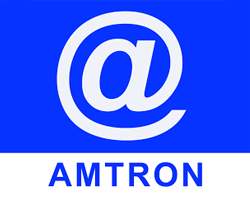EVOLUTION FROM 1G TO 5G
a. Introduction: 5G is the 5th generation mobile network. It is a new global wireless standard after 1G, 2G, 3G, and 4G networks. 5G enables a new kind of network that is designed to connect virtually everyone and everything together including machines, objects, and devices. 5G wireless technology is meant to deliver higher multi-Gbps peak data speeds, ultra-low latency, more reliability, massive network capacity, increased availability, and a more uniform user experience to more users. Higher performance and improved efficiency empower new user experiences and connects new industries.

b. How does 5G work? Like 4G LTE, 5G is also OFDM-based (Orthogonal frequency-division multiplexing) and will operate based on the same mobile networking principles. However, the new 5G NR (New Radio) air interface will further enhance OFDM to deliver a much higher degree of flexibility and scalability. 5G will not only deliver faster, better mobile broadband services compared to 4G LTE, but it will also expand into new service areas, such as mission-critical communications and connecting the massive IoT. This is enabled by many new 5G NR air interface design techniques, such as a new self-contained TDD subframe design.
c. What are the differences between the previous generations of mobile networks and 5G? The previous generations of mobile networks are 1G, 2G, 3G, and 4G.
i. First Generation - 1G - 1980s: delivered analog voice.
ii. Second Generation - 2G - Early 1990s: introduced digital voice (e.g. CDMA- Code Division Multiple Access).
iii. Third Generation - 3G - Early 2000s: Brought mobile data (e.g. CDMA2000).
iv. Fourth Generation - 4G LTE - 2010s: 4G LTE ushered in the era of mobile broadband.
v. 5G - 1G, 2G, 3G, and 4G all led to 5G, which is designed to provide more connectivity than was ever available before. 5G is a unified, more capable air interface. It has been designed with an extended capacity to enable next-generation user experiences, empower new deployment models and deliver new services. With high speeds, superior reliability and negligible latency, 5G will expand the mobile ecosystem into new realms. 5G will impact every industry, making safer transportation, remote healthcare, precision agriculture, digitized logistics — and more — a reality.
d. How is 5G better than 4G?
i. There are several reasons that 5G will be better than 4G:
1. 5G is significantly faster than 4G
2. 5G has more capacity than 4G
3. 5G has significantly lower latency than 4G
4. 5G is a unified platform that is more capable than 4G
5. 5G uses spectrum better than 4G
ii. 5G is a unified platform that is more capable than 4G - While 4G LTE focused on delivering much faster mobile broadband services than 3G, 5G is designed to be a unified, more capable platform that not only elevates mobile broadband experiences, but also supports new services such as mission-critical communications and the massive IoT. 5G can also natively support all spectrum types (licensed, shared, unlicensed) and bands (low, mid, high), a wide range of deployment models (from traditional macro-cells to hotspots), and new ways to interconnect (such as device-to-device and multi-hop mesh).
iii. 5G uses spectrum better than 4G - 5G is also designed to get the most out of every bit of spectrum across a wide array of available spectrum regulatory paradigms and bands—from low bands below 1 GHz, to mid bands from 1 GHz to 6 GHz, to high bands known as millimeter wave (mmWave).
iv. 5G is faster than 4G - 5G can be significantly faster than 4G, delivering up to 20 Gigabits-per-second (Gbps) peak data rates and 100+ Megabits-per-second (Mbps) average data rates. In downloading a full 8K HD Video, 5G shall be 500 times more faster than 4G LTE!
e. How fast is 5G? 5G is designed to deliver peak data rates up to 20 Gbps based on IMT-2020 requirements. Qualcomm Technologies’ flagship 5G solutions, the Qualcomm® Snapdragon™ X65 is designed to achieve up to 10 Gbps in downlink peak data rates.
i. But 5G is about more than just how fast it is. In addition to higher peak data rates, 5G is designed to provide much more network capacity by expanding into new spectrum, such as mmWave.
ii. 5G can also deliver much lower latency for a more immediate response and can provide an overall more uniform user experience so that the data rates stay consistently high—even when users are moving around. And the new 5G NR mobile network is backed up by a Gigabit LTE coverage foundation, which can provide ubiquitous Gigabit-class connectivity.










